The push pull legs routine isn’t new, but it’s endured for decades for one simple reason: it’s a fantastic split for gaining mass.
By organizing workouts around movement patterns instead of muscle groups, the “PPL” split allows you to train efficiently, recover effectively, and build muscle and strength faster than most other routines.
In this guide, you’ll learn everything you need to know about the push pull legs routine, including how to structure your workouts, why it works so well, and the best ways to adapt it to your goals and schedule.
Key Takeaways
- The push pull legs routine is a weightlifting program that organizes workouts based on whether you’re training your “pushing” muscles (pecs, shoulders, triceps), “pulling” muscles (back and biceps), or legs.
- A well-designed push pull legs routine prioritizes compound exercises, allowing you to train multiple muscles at once, lift heavy weights safely, and make consistent progress.
- A key benefit of the push pull legs split is that it allows you plenty of rest between workouts, so you can train hard while avoiding burnout.
- The PPL split is highly flexible, allowing you to adapt your training to your goals and schedule, whether you want to train 2, 3, 4, 5, or 6 days per week.
- To get the most out of your push pull legs workouts, consider using a high-quality protein powder to help you reach your daily protein target, creatine to support recovery and muscle growth, and a pre-workout to enhance energy, focus, and performance.
Table of Contents
+
What Is the Push Pull Legs (PPL) Split?
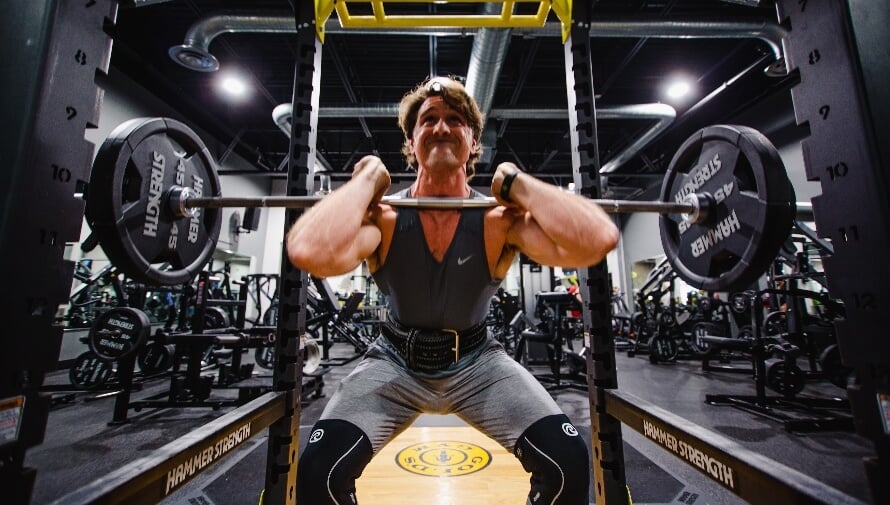
The push pull legs routine, also known as the push/pull/legs workout split or PPL split, is a weightlifting program involving three kinds of workouts:
- Push workouts
- Pull workouts
- Legs workouts
Push Workouts
A push workout trains all the upper-body muscles that push things away from your torso, such as your chest, shoulders, and triceps. These workouts revolve around exercises, such as the bench press, overhead press, and close-grip bench press.
They may also include isolation exercises for your triceps, like the triceps pushdown, overhead triceps extension, and skullcrusher.
Pull Workouts
A pull day workout trains all the muscles involved in pulling things off the floor or toward your torso. These workouts revolve around exercises like the deadlift, barbell, dumbbell, and cable row and lat pulldown.
Well-designed push pull legs splits will also include isolation exercises for your biceps, like the biceps curl, hammer curl, and preacher curl.
Legs Workouts
A leg day workout trains all the lower-body muscles, such as the quads, hamstrings, glutes, and calves. Unlike push and pull workouts, these workouts generally don’t revolve around specific “movement patterns.”
Instead, they typically contain exercises that train your entire lower body, such as the back and front squat, lunge, and leg press.
Benefits of Push Pull Legs Workout Routines?
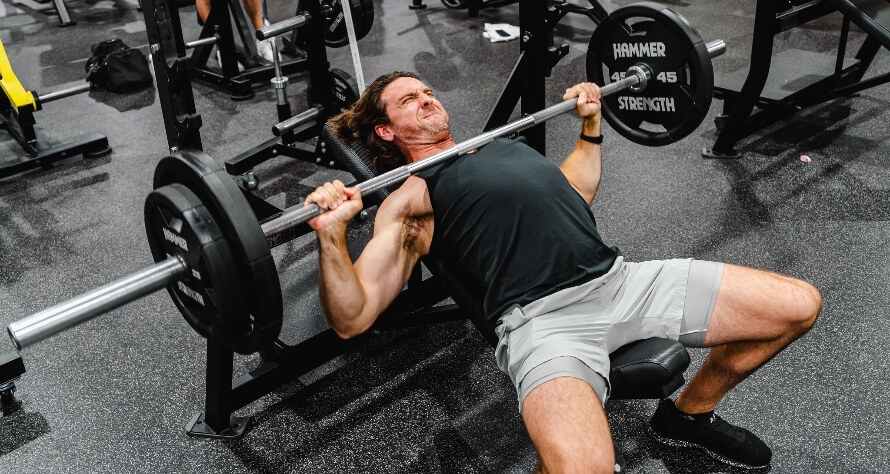
Push pull legs routines are popular because they emphasize compound weightlifting, allow for plenty of rest, and can adapt to any schedule.
Let’s explore each of these benefits in more detail.
Emphasize Compound Exercises
Push pull legs routines are a staple training method among bodybuilders and powerlifters because they emphasize compound exercises.
A compound exercise is any exercise that targets multiple muscle groups at once, such as the squat, deadlift, bench press, and overhead press.
These exercises should make up the lion’s share of any well-designed weightlifting program because they allow you to train dozens of muscles simultaneously, lift heavy weights safely, and progress regularly, all of which makes them ideal for gaining mass.
Allow for Plenty of Rest
The only downside to compound weightlifting is that it’s highly demanding on your body—you need a lot of energy for workouts and a lot of time to recover afterward.
That’s why PPL has you split your upper body workouts into two separate training days and limits the amount of lower body training you do each week (which tends to be more taxing).
Organizing your PPL routine like this allows your muscles plenty of rest days between workouts, allowing you to perform better over the long term.
Highly Adaptable
Another major benefit of the push pull legs routine is you can easily customize it to fit your needs and circumstances.
With just three basic workouts to choose from, it’s easy to grasp and modify as needed. For example, the most basic PPL split looks like this:
- Monday: Push
- Wednesday: Pull
- Friday: Legs
And you could do something like this if you prefer to train just twice per week:
- Monday: Push and Pull
- Thursday: Legs
Or, you could do a six-day routine like this to push yourself to the limit:
- Monday: Push
- Tuesday: Pull
- Wednesday: Legs
- Thursday: Push
- Friday: Pull
- Saturday: Legs
The Best Push Pull Legs Workout Routines for Mass Gain
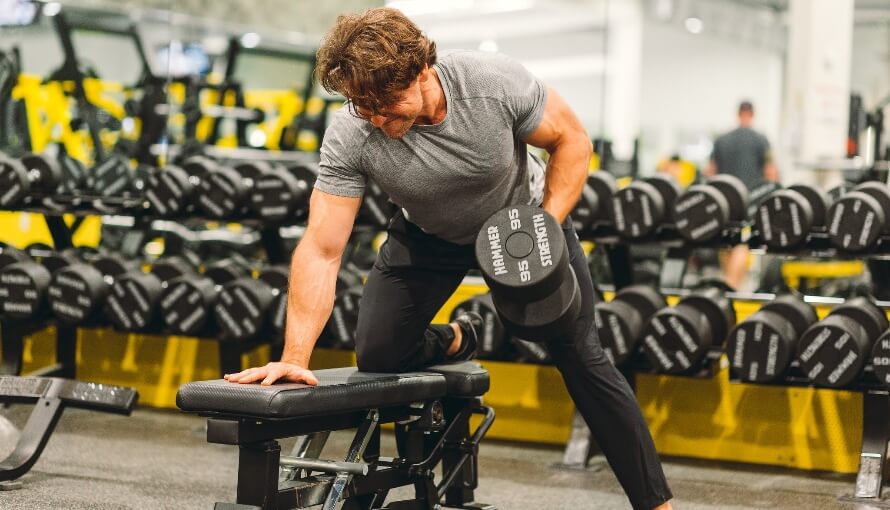
Before hitting the gym, the first thing to decide is how many days per week you want to train.
If you have ample time and want to maximize muscle and strength gains, I recommend training 4-to-6 days per week.
If you’re short on time or don’t want to train that often, you can still do great with 2-to-3 weekly workouts.
With that decided, the next step is creating a specific routine.
There are many ways of organizing PPL workouts, but I’m going to keep it simple and give you a few PPL example routines to choose from.
Let’s start with the workouts themselves, and then we’ll see how to combine them into routines.
The Push Pull Legs Workouts
You can create an infinite variety of push pull legs routines, but here are a few of my favorites.
As you’ll see, they involve a lot of heavy, compound weightlifting, supplemented with moderately heavy accessory work.
(If you’re unsure how to perform any of the exercises, click on their names for a detailed guide on safe and effective technique.)
Push Workout #1
- Flat Barbell Bench Press: 3 sets | 4-to-6 reps | 3-to-5 min rest
- Standing Overhead Press: 3 sets | 4-to-6 reps | 3-to-5 min rest
- Close-Grip Bench Press: 3 sets | 6-to-8 reps | 2-to-3 min rest
- Dumbbell Side Lateral Raise: 3 sets | 6-to-8 reps | 2-to-3 min rest
Push Workout #2
- Incline Barbell Bench Press: 3 sets | 4-to-6 reps | 3-to-5 min rest
- Seated Overhead Press: 3 sets | 4-to-6 reps | 3-to-5 min rest
- Cable Side Lateral Raise: 3 sets | 6-to-8 reps | 2-to-3 min rest
- Dumbbell Rear Lateral Raise: 3 sets | 6-to-8 reps | 2-to-3 min rest
Pull Workout #1
- Deadlift: 3 sets | 4-to-6 reps | 3-to-5 min rest
- Pull-up: 3 sets | 4-to-6 reps | 3-to-5 min rest
- One-Arm Dumbbell Row: 3 sets | 6-to-8 reps | 2-to-3 min rest
- Dumbbell Curl: 3 sets | 6-to-8 reps | 2-to-3 min rest
Pull Workout #2
- Barbell Row: 3 sets | 4-to-6 reps | 3-to-5 min rest
- Chin-up: 3 sets | 4-to-6 reps | 3-to-5 min rest
- Cable Row: 3 sets | 6-to-8 reps | 2-to-3 min rest
- Hammer Curl: 3 sets | 6-to-8 reps | 2-to-3 min rest
Leg Workout #1
- Back Squat: 3 sets | 4-to-6 reps | 3-to-5 min rest
- Leg Press: 3 sets | 4-to-6 reps | 3-to-5 min rest
- Bulgarian Split Squat: 3 sets | 6-to-8 reps | 2-to-3 min rest
- Leg Curl: 3 sets | 6-to-8 reps | 2-to-3 min rest
Leg Workout #2
- Front Squat: 3 sets | 4-to-6 reps | 3-to-5 min rest
- Romanian Deadlift: 3 sets | 4-to-6 reps | 3-to-5 min rest
- Lunge: 3 sets | 6-to-8 reps | 2-to-3 min rest
- Seated Calf Raise: 3 sets | 6-to-8 reps | 2-to-3 min rest
Now, let’s see how to turn them into workout routines.
The 2-Day Push Pull Legs Routine
As I mentioned earlier, you can do well training just twice per week.
More would be better if you’re trying to gain mass and strength as quickly as possible. But, when circumstances don’t allow for more gym time, this is a solid 2-day PPL routine that you can always fall back on to at least maintain what you’ve got:
- Monday: Push Workout #1 + Pull Workout #1
- Tuesday: Rest
- Wednesday: Rest
- Thursday: Leg Workout #1
- Friday: Rest
- Saturday: Rest
- Sunday: Rest
The 3-Day Push Pull Legs Routine
This 3-day PPL workout routine is the most basic way to set up a PPL split. It’s also my favorite split for training 3 days per week.
Again, more training is best for maximizing mass gains, but this 3-day PPL split is a time-proven program for gaining size and strength:
- Monday: Push Workout #1
- Tuesday: Rest
- Wednesday: Pull Workout #1
- Thursday: Rest
- Friday: Leg Workout #1
- Saturday: Rest
- Sunday: Rest
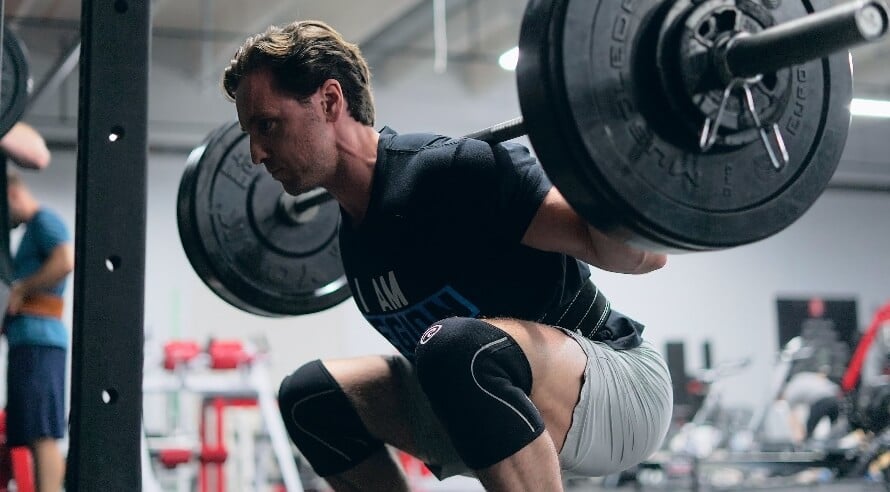
The 4-Day Push Pull Legs Routines
Adding a fourth day allows you to work more on whichever major muscle groups are most lagging or you want to develop quickly.
Thus, I’m going to provide two 4-day PPL routines: one for people who want to focus more on their upper bodies and one for focusing more on the lower body.
4-Day Push Pull Legs Routine: Upper Body Focus
- Monday: Push Workout #1
- Tuesday: Pull Workout #1
- Wednesday: Rest
- Thursday: Leg Workout #1
- Friday: Push Workout #2 or Pull Workout #2
- Saturday: Rest
- Sunday: Rest
4-Day Push Pull Legs Routine: Lower Body Focus
- Monday: Push Workout #1
- Tuesday: Leg Workout #1
- Wednesday: Rest
- Thursday: Pull Workout #1
- Friday: Leg Workout #2
- Saturday: Rest
- Sunday: Rest
The 5-Day Push Pull Legs Routines
This is my preferred push pull legs split because it allows you to push the limits of volume and intensity while allowing a couple of days for recovery.
Again, I’m going to provide two routines: one for emphasizing the upper body and one for the lower body.
5-Day Push Pull Legs Routine: Lower Body Focus
- Monday: Push Workout #1
- Tuesday: Pull Workout #1
- Wednesday: Leg Workout #1
- Thursday: Push Workout #2
- Friday: Pull Workout #2
- Saturday: Rest
- Sunday: Rest
5-Day Push Pull Legs Routine: Lower Body Focus
- Monday: Leg Workout #1
- Tuesday: Push Workout #1
- Wednesday: Pull Workout #1
- Thursday: Leg Workout #2
- Friday: Push Workout #2
- Saturday: Rest
- Sunday: Rest
The 6-Day Push Pull Legs Routine
A 6-day PPL split contains about as much volume as most natural weightlifters can manage before they compromise recovery and subsequent progress.
As such, you should only attempt this push pull legs routine if you’re an experienced weightlifter who would benefit from the extra volume, in a lean bulking phase, recovering well from training (e.g., no stress, aches and pains, or sleep issues), and feeling up to the challenge.
If you don’t meet these prerequisites, choose a less demanding push pull legs split from above.
Here’s the 6-day PPL routine:
- Monday: Push Workout #1
- Tuesday: Pull Workout #1
- Wednesday: Leg Workout #1
- Thursday: Push Workout #2
- Friday: Pull Workout #2
- Saturday: Leg Workout #2
- Sunday: Rest
3 Tips for More Effective Push Pull Legs Workouts
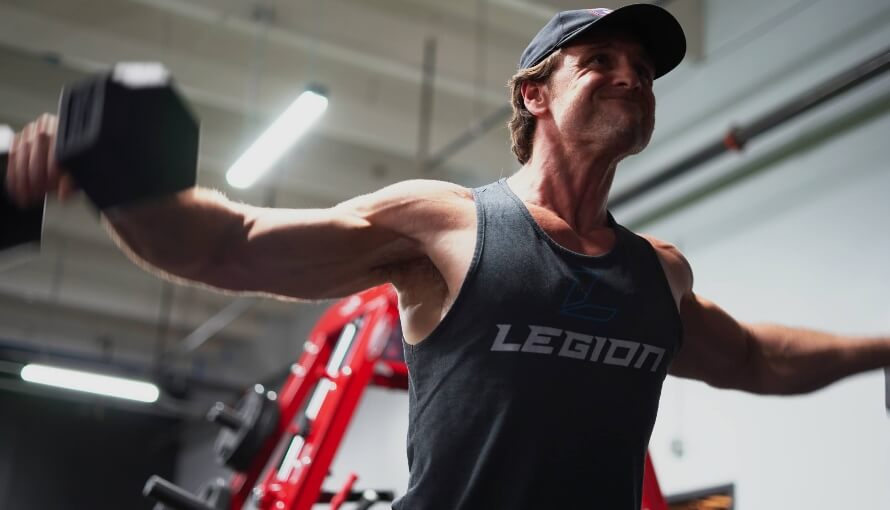
1. End every set 1-to-3 reps shy of muscle failure.
As I explain in my fitness books for men and women, to maximize your results, you must take most of the sets in your push pull legs workouts to within a rep or two of failure.
To gauge whether you’re reaching this point, ask yourself at the end of each set: “If I had to, how many more reps could I have done with good form?”
If the answer is more than three, increase the weight or reps on your next set to make it more challenging.
2. Once you hit the top of your rep range for a set, move up in weight.
If your push pull legs workout calls for 4-to-6 reps of the deadlift and you get 6 reps for a set, add 10 pounds to your next set.
If you do 3 reps or fewer in subsequent sets, reduce the load by 5 pounds to stay in the 4-to-6 rep range.
Apply this approach to every exercise in your push pull legs routine, aiming to add either weight or reps every session.
3. Take the right supplements.
These supplements can help you optimize your performance and gains while following a push pull legs workout routine:
- Protein powder: Protein powder, such as whey or casein, provides your body with the nutrients needed to build muscle tissue and recover from workouts. For a clean and delicious protein powder, try Whey+ or Casein+.
- Creatine: Creatine boosts muscle and strength gain, improves anaerobic endurance, and reduces muscle damage and soreness from your workouts. For a natural source of creatine, try our creatine monohydrate, creatine gummies, or Recharge.
- Pre-workout: A high-quality pre-workout enhances energy, mood, and focus, increases strength and endurance, and reduces fatigue. For a top-tier pre-workout containing clinically effective doses of 6 science-backed ingredients, try Pulse with caffeine or without.
(If you’d like even more specific advice about which supplements you should take to reach your health and fitness goals, take the Legion Supplement Finder Quiz, and in less than a minute, you’ll know exactly what supplements are right for you.)
FAQ #1: Is push pull legs effective?
Yes, the push pull legs routine is highly effective for building muscle and strength. It emphasizes compound exercises, which make progressively overloading your muscles straightforward. This matters because lifting heavier weights over time is the primary driver of muscle growth.
The PPL split also ensures you get plenty of recovery, allowing you to train hard without burning out, and it’s easy to adapt to different schedules and fitness goals.
Despite these benefits, the push pull legs split has recently come in for criticism, primarily because some think it doesn’t train your muscles frequently enough to produce optimal gains.
I disagree.
The PPL routine is incredibly versatile—you can adjust it to suit any goal or schedule.
You can read more about my thoughts on this topic here:
Is the Push Pull Legs Split “Dead?”
FAQ #2: What bodybuilders use the push pull legs split?
Bodybuilders regularly change their routines, so it’s tricky to pinpoint who’s currently following a PPL split.
However, it’s been a go-to for many top athletes, including six-time Mr. Olympia Chris Bumstead. Renowned natural bodybuilder and coach Eric Helms also used a modified PPL split as the basis for one of the routines in his book The Muscle and Strength Pyramid: Training.
RELATED: An Expert Guide to Eric Helms’s Novice Bodybuilding Program
FAQ #3: Push pull legs vs. Different muscle groups: Which is better?
Neither is better or worse than the other. Which you choose depends on your goals and preferences.
The push pull legs split offers more scheduling flexibility and, when programmed correctly (or using one of the routines above), ensures you train each muscle group frequently and with enough sets to build mass and strength effectively.
In contrast, a routine that focuses on training different muscles on separate days—commonly known as the “bro split”—allows for even more recovery time for individual muscle groups.
Many gymgoers also enjoy bro splits because they let you train each muscle group to exhaustion, which leads to the satisfying “pumped” feeling after a workout.
However, most bro splits don’t train each muscle group often enough to maximize muscle growth, making PPL a better choice for those looking to maximize mass and strength gains in most cases.
RELATED: What Is a Bro Split Workout Routine?
FAQ #4: Push pull legs vs. Upper lower: Which is better?
Both the push pull legs and upper lower splits are excellent routines, and neither is inherently better or worse.
Both are highly flexible and, when programmed correctly, ensure you train your muscles frequently and with enough volume to maximize growth and strength gains.
The primary difference is how upper-body training is organized. The upper lower split groups all upper-body exercises into “upper days,” while the PPL split separates them into pushing and pulling workouts.
In practice, the results from either approach are nearly identical, so if you’re deciding between them, choose the one that better suits your preferences.
RELATED: The Best 3-, 4- & 5-Day Upper Lower Workout Splits for Mass
FAQ #5: Can you do a push pull legs calisthenics routine?
Yes you can do a push pull legs calisthenics routine. Here’s how I’d program it:
Calisthenics Push Workout:
- Dip: 3 sets | 10-to-20 reps | 2-to-3 min rest
- Handstand Push-up: 3 sets | 10-to-20 reps | 2-to-3 min rest
- Decline Push-up: 3 sets | 10-to-20 reps | 2-to-3 min rest
- Bodyweight Triceps Extension: 3 sets | 10-to-20 reps | 2-to-3 min rest
Calisthenics Pull Workout:
- Pull-up: 4 sets | 10-to-20 reps | 2-to-3 min rest
- Chin-up: 4 sets | 10-to-20 reps | 2-to-3 min rest
- Inverted Row: 4 sets | 10-to-20 reps | 2-to-3 min rest
Calisthenics Leg Workout:
- Pistol Squat: 4 sets | 5-to-20 reps | 2-to-3 min rest
- Sissy Squat: 4 sets | 5-to-20 reps | 2-to-3 min rest
- Nordic Leg Curl: 4 sets | 5-to-15 reps | 2-to-3 min rest
RELATED: The Best Bodyweight Workouts and Exercises You Can Do










